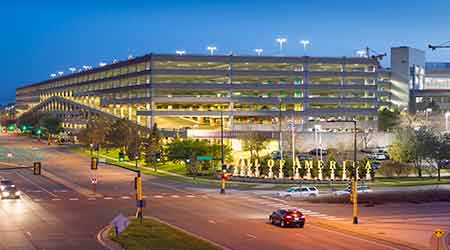Successful Lighting Upgrades at Mall of America Require Effective Planning
Part 2 of a 3-part article on the Mall of America's lighting upgrades
Successful lighting upgrades involve much more than installing the most appropriate products. Effective planning also involves accounting for post-installation maintenance, minimizing facility disruptions, and communicating clearly with all team members and affected parties.
Brantl’s staff is hands-on with the Mall of America’s lighting systems once installation is complete.
“What I do with lighting systems is go through existing stuff and make my own suggestions about how we can have reduction of wattage with better lighting,” says Brantl, who tends to not be involved in the initial planning of projects.
To avoid interrupting the flow of traffic through the mall when performing system testing and maintenance by doing most of the work in common areas overnight, when the facility is closed to the public.
“We don’t do our maintenance that would interfere with our tenants, but we get calls constantly” throughout the day, Brantl says. “We monitor all the temperature in the mall as far as cooling, and we also program a lot of different lighting for different events when they want lights on at a certain time.”
Brantl’s role in planning the upgrades requires regular communication with city officials regarding lighting codes. He works closely with Bloomington officials to ensure the proposed projects meet the city’s building codes for lighting.
“Most of the stuff the mall does, even in the ramp lighting, it’s not going to be an out-of-the-box fixture,” Brantl says. “It has to be a spec-made fixture. The best thing I can do is work closely with the city and not slip something by them because then you have a trust factor. Once you have (clear communication), you get along real well.”
Related Topics:














